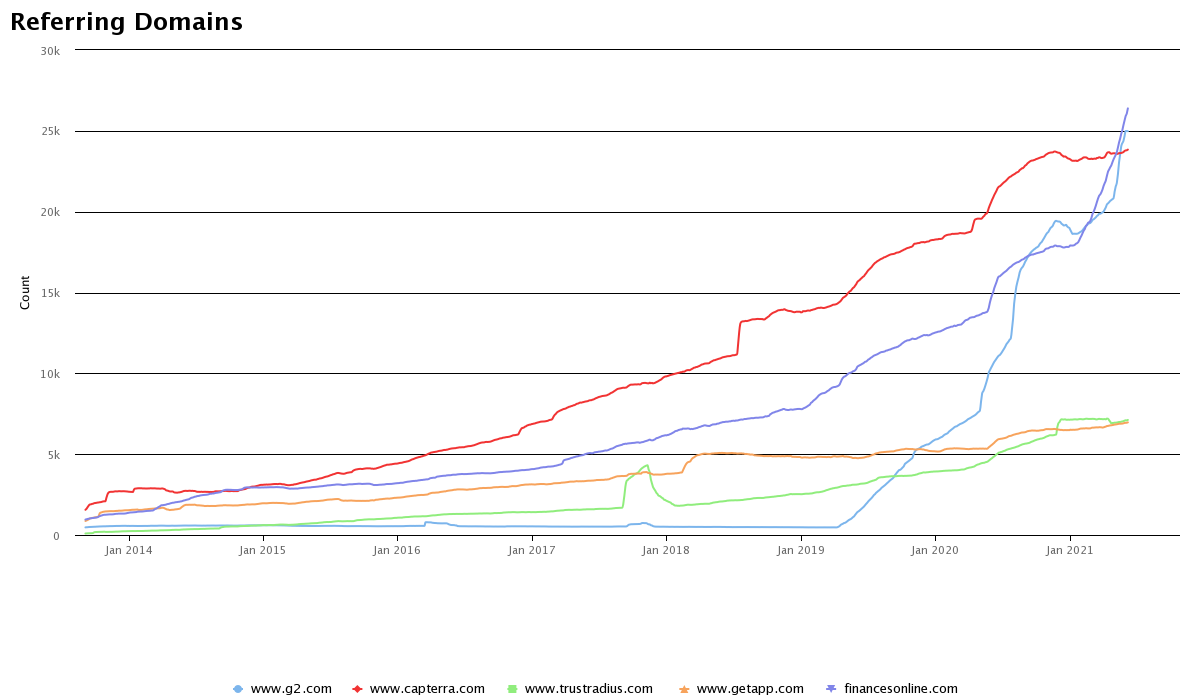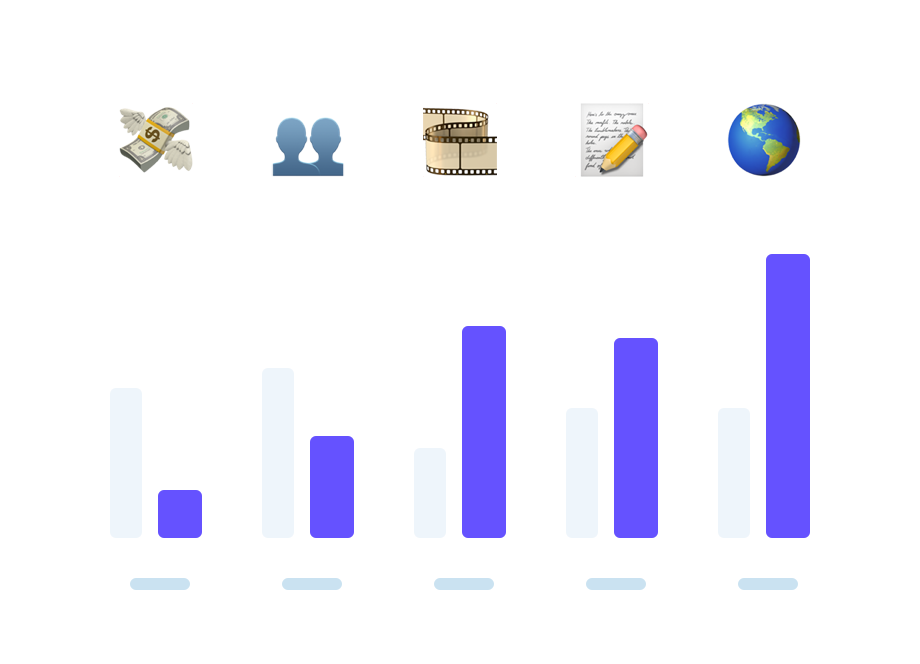
Mobile apps are a huge part of everyone’s lives. They help people learn new skills, shop online, and explore the world around them.
Mobile usage is growing by the second, and creating a mobile app can be a lucrative business. Still, there’s one problem. How to market your app properly?
Luckily, there are many paid and free ways to promote a mobile app and get people to download it.
Table of Contents
Paid mobile app marketing
The mobile app market is saturated, and the competition is fierce. You have to spend some money for your app to be seen. Let’s take a look at some of the best marketing channels.
Google Ads and Microsoft Advertising
Google Ads and Microsoft Advertising (previously Bing Ads) are the best marketing channels for promoting a mobile app.

Get unreal data to fix real issues in your app & web.
Both have a similar interface. Google lets you create App campaigns and streamline the process, allowing you to promote mobile apps across Google’s largest properties. What’s even better, Google automatically tracks and counts app installations as conversions.
You can also even utilize video assets for promotions.
| Google Ads | Bing Ads | |
|---|---|---|
| Network reach | 92% of global search engine market share | 3% of global search engine market share |
| Average cost | $2 CPC | $1.50 CPC |
| Demographics | All ages | Older audience, between 35-54 |
| Ad rules | Rules apply for keywords and topics depending on country | Less strict rules for certain keywords, topics |
| Traffic quality | Highly targeted, reaching a global audience | More senior audience with a higher average income |
Microsoft (Bing) Advertising is much younger than Google Ads, but there’s one advantage. Since Google dominates the search engine market, Bing is targeting more specific audiences.
That translates to 60 million searchers that Google doesn’t reach. If you add App Extensions in your ads on Bing, you can significantly increase the number of app downloads.
Social media platforms
Every social media platform lets you promote your app, but isn’t equally as efficient.
Naturally, Facebook is at the top of the list since it has the most users. It’s the first platform to utilize once you decide to start your promotion. It also lets you post various content, like images, videos and Stories, and setting up sponsored Facebook posts can be done with a few clicks.
Other great platforms to promote your app are: Twitter, Instagram, Snapchat, and Pinterest.
All of these allow for promoted posts. Your platform of choice depends on your app’s type, target audience, and budget. Be sure to pick the one that best suits your business goals.
Video promos
Short video promos are another asset you can use to your advantage when promoting your app.
They help boost engagement and showcase your mobile app functionality. You might be able to create a decent video promo by yourself if you utilize the existing video creation platforms with templates.
Still, it might be best to hire an expert.
DIY app preview videos can cost $10 to $350, depending on the template and editing software. If you decide to hire an agency, the lowest price is around $200. In comparison, the average cost for a decent video is closer to $2,500.
Niche-related bloggers
Blogs are one of the best ways to reach more people. There are lots of famous tech blogs with millions of monthly visitors, and featuring your app there can attract a lot of attention.
Prices vary for each blog and depend on the app you want to promote.
If you decide on this marketing channel, you should know that you can’t expect the review to be focused only on the good aspects of your app. Bloggers need to be objective and might be inclined to also mention things they didn’t like about your app.
By staying objective they build trust with their readers, so make sure your app is well-tested before hiring any bloggers.
Influencers
If you take a closer look, you’ll notice many influencers promoting apps online.
You can utilize their audience as well. Explore various tech influencers and see how active their audience is and approach them with an offer.
If they’re willing to promote your app, make sure you define the following:
- Campaign medium – how will they promote your app?
- Tracking code – how will the performance of the campaign be tracked?
- Performance indicators – how to tell if the campaign is doing good or bad?
- Cost – how much will the sponsorship cost?
- Links – will they use any of your affiliate links?
- The number of posts – how many posts will the influencer post?
- Campaign length – how long will the promotion last?
If you can’t find the right influencer on your own, you can contact influencer agencies to find one for you. Remember that every influencer you hire has to align with your brand and niche.
That will maximize your gains and also help them promote your app to the relevant audience.
Press releases
PRs are a more affordable marketing method you can utilize to announce the launch of your app. It can also help you improve your SEO, increase brand awareness, or attract customers.
A quality press release should be something newsworthy and written for your target audience. It’s short, with a catchy headline backed by statistics. You’re free to include images and should write your PR in the third person. Don’t forget your contact details, city, state, and location, and boilerplate text.
Make sure that your PR statement always stays on point with your brand’s vision and goals, as it will be read by everyone from employees to potential investors.
Your business website
If you created your app with the intention to monetize it, you’d want to have a business website where potential customers can learn more about it.
A website allows you to optimize for search engines or create a landing page to use in your ads.
It also builds credibility, and is a great place to host your blog where you can talk about the development and new app releases, changes, and app-related news.
The average price of creating a business website is $2,000, but if you’re tech-savvy, you can do it for way less and barely touch your marketing budget.
Free marketing channels for app promotion
Besides paid marketing channels, you can promote your app for free. Some of these marketing channels can also be utilized in the offline setting.
Signatures and online communities
Creating your email signature with the link to your app is a subtle way to promote it.
If you’re a member of any niche-related forum, use the link in your bio or forum signatures. In case you find forums that allow for app promotion, utilize the space wisely, and don’t spam.
Show why people would love your app instead of repeatedly posting the same message.
Be ready to answer questions. If you notice that your community wants to know more about your app, you can think of hosting an Ask Me Anything event with your developers included.
Proper SEO and ASO
SEO is one of the best free methods to increase brand exposure through search engine results.
Whatever content you create for promoting your app, make sure it’s also SEO optimized. This includes every PR, blog post, video, social media post, or ad.
On the other hand, you have App Store Optimization. It’s the SEO for your app store, with the difference in the ranking factors, search engine, off and on-page optimization, and goals.
| Type | SEO (Search engine optimization) | ASO (App store optimization) |
|---|---|---|
| On page/ On app | Headlines | App name |
| Keyword density | Description and keywords | |
| Page load speed | Usage statistics | |
| Bounce rate | Number of uninstalls | |
| Off-page/ Off-app | Links | Downloads |
| Anchor texts | Ratings and review | |
| Social media | Social media |
SEO involves more than 200 aspects, while ASO requires way less. With SEO, you optimize for Google, while your focus is on the app store with ASO. Both SEO and ASO will help you get more visitors and app downloads.
App awards
App awards and competitions are a great way to reach out to more potential users. These are usually free to participate in.
You’ll find that there are many different app awards programs focused on marketing, investment opportunities, and partnerships. Some might also pay cash awards to winners.
Since there are many app categories, you’ll have no trouble finding the right one for your app. Every competition also has its own set of rules and rewards.
For example, some may be specific to an app store or require certain conditions met to apply. You’ll want to do your research beforehand and be ready to compete.
Asking users for reviews
The mobile app user experience should be one of the main things you must perfect. It’s everything that a user sees while using your app. It’s also the main factor in the app’s success.
While developing your app, don’t forget to ask users for reviews. Consider these as direct feedback. You’ll instantly see what your users love and what you have to change to improve the user experience.

In return, this will bring you more positive reviews, and more people will download and try your app. You’ll also be able to show these positive reviews on your website and other marketing platforms.
Related local events
If you’re often in the company of app developers, chances are you’ll be invited to some local event related to your niche.
Keep in mind that even though you’re invited as a friend or a coworker, it shouldn’t stop you from mentioning your app. Events are a great place to expand your social circle and perhaps even gain new customers.
However, you wouldn’t want to disrupt the event. Subtlety can go a long way when promoting your app. If you see people gaining interest in what you have to offer, you can create an event of your own down the line.
Your car
Did you know that Instagram influencers post their usernames on their cars? With it, they’re getting real-life exposure, and that’s an opportunity you shouldn’t miss.
You can print a bumper sticker with your app logo and put it on your car. It’s an interesting way to get attention, and it’s great if the local community is your target audience.
Before doing this, remember to check the laws on car stickers and decals. Bumper stickers are usually legal, but they shouldn’t distract you while driving, and cover your license plate.
The major unspoken benefit of bumper stickers is that they might get your app noticed by investors, even help you gain some additional PR exposure.
Conclusion
Marketing an app can be challenging. The competition is fierce, and people always want something new and better. It’s your job to stand out from the crowd.
This is why you should carefully plan and use both free and paid marketing channels to promote your app and beat the competition. Finding the perfect mix is no easy task, however, knowing your target audience well should go a long way towards success.





